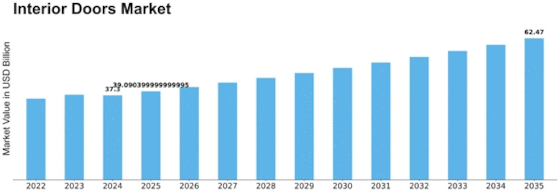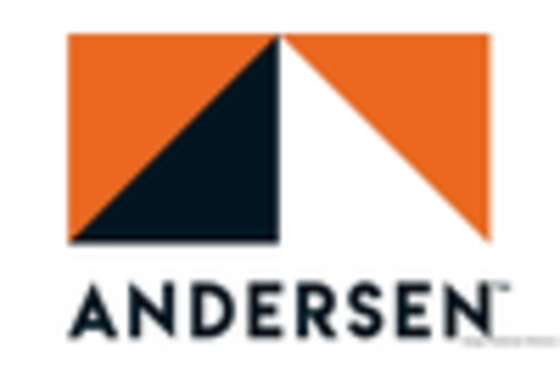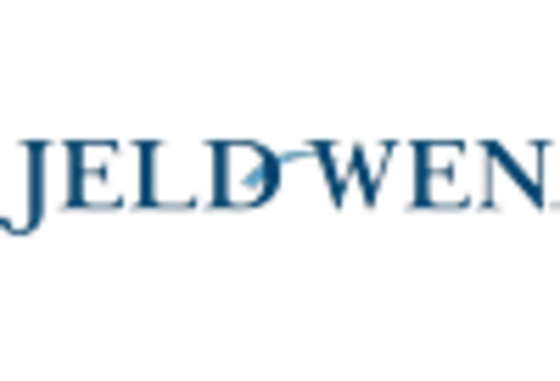Interior Doors Size
Interior Doors Market Growth Projections and Opportunities
The interior doors market is influenced by various factors that impact its growth and dynamics. One significant factor is the construction and real estate industry's performance, which drives the demand for interior doors in residential, commercial, and institutional buildings. As urbanization and population growth continue, there's a consistent need for new construction and renovation projects, creating a steady demand for interior doors. Additionally, trends in interior design and home improvement play a role in shaping the market. Consumers' preferences for stylish, durable, and functional interior doors influence product development and innovation in the industry.
The interior doors market is projected to grow at a high rate over the coming years. Increasing residential & commercial renovation activities and new constructions across the world is anticipated to drive the demand for interior doors. The need for improved visual aesthetics and demand for privacy in multifamily dwellings is expected to propel the demand for interior doors over the forecast period. Interior doors are available in a wide variety of designs, colors, and material, manufacturers also offer customized products that are in line with the client requirement, thus driving the market demand.
Moreover, advancements in manufacturing technology and materials contribute to the evolution of the interior doors market. Manufacturers are constantly innovating to develop doors that offer improved performance, such as enhanced durability, sound insulation, and fire resistance. This innovation also extends to the use of sustainable materials and eco-friendly production processes, reflecting growing consumer awareness and demand for environmentally responsible products.
Market factors also include the availability and cost of raw materials, such as wood, steel, fiberglass, and composite materials, which are used to manufacture interior doors. Fluctuations in raw material prices, supply chain disruptions, and regulatory changes can impact production costs and pricing dynamics in the interior doors market. Sustainable sourcing practices and responsible forestry management are increasingly important considerations for manufacturers to ensure a stable supply of raw materials and meet environmental standards.
Furthermore, consumer preferences and lifestyle trends influence the design and features of interior doors. As homeowners seek to personalize their living spaces, there's a growing demand for customizable and high-end interior doors that reflect individual styles and preferences. Additionally, factors such as aging populations and accessibility requirements drive the demand for interior doors with features like wider openings, lever handles, and wheelchair accessibility options.
Regulatory frameworks and building codes also shape the interior doors market. Building regulations and standards govern aspects such as safety, energy efficiency, and accessibility, impacting the design and specifications of interior doors used in residential and commercial buildings. Compliance with these regulations is essential for manufacturers and builders to ensure the quality and performance of interior doors and meet customer expectations.
Global market trends and economic conditions also play a significant role in the interior doors market. Economic factors such as GDP growth, disposable income levels, and consumer spending patterns influence the demand for housing and renovation projects, driving the market for interior doors. Moreover, demographic shifts, lifestyle changes, and urbanization trends impact the types and styles of interior doors preferred by consumers in different regions.
Trade dynamics and international market trends also impact the interior doors market. Globalization and international trade agreements facilitate the movement of raw materials and finished products across borders, influencing pricing dynamics and market competitiveness. Trade disputes, tariffs, and regulatory barriers can disrupt supply chains and affect the availability and cost of interior doors in different markets.


















Leave a Comment